Valentine’s Day is right around the corner, and all over the world florists are in full-on hustling mode trying to fulfill the quadrillion orders for floral arrangements that are being made around the clock, especially requests for the quintessential bouquets of pink and red roses. You know what though? I say who needs a dozen roses when you can have rosés instead?
For the record I actually, truly do love flowers (I’m a tulip and ranunculus kind of girl in case anyone wants to send a bunch this way). It’s just that sometimes a lady needs a bottle instead of a bloom, and what wine is better suited to Valentine’s Day than the beautifully hued, and aptly named, rosé?
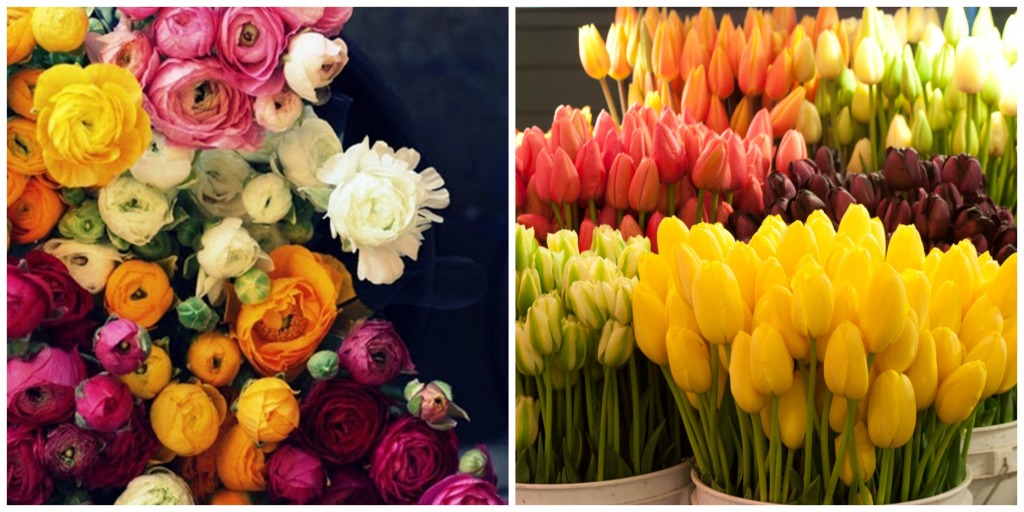
If you want to get me flowers, skip the roses–I’ll take ranunculuses and tulips instead. {left photo via Flowerona.com; right image via ASweetSpoonful.com}
Why rosés, you ask? Well there are a ton of reasons rosés should be one of your favorite wines to sip: (1) first of all, rosés are both super easy to pair with food as well as sip alone. This makes it a versatile, crowd pleasing choice for entertaining whether it’s for a crowd; for an intimate and romantic tête-à-tête; or for sipping solo (2) second, for the most part it’s a relatively inexpensive wine varietal with many bottles coming in at $20 and under (with the exception of the champagnes, of course); and (3) third, it comes in such beautiful hues! From light salmon to deep strawberry jam, the dazzling color display in a glass of rosé is enchanting and adds to the pleasure of drinking it.
How to Pick Your Own Bunch of Rosés
Convinced rosés are the way to go yet? Perfect. Now let’s go over a few tidbits of info that can help guide you when you’re looking to pick up a bottle or two:
- The darker the rosé is, the more it takes on the characteristic of red wine, such as being weightier and fuller, as well as being more textural and tannic on your palate. So what that means is white wine drinkers should steer towards the lighter hued rosés, and red wine lovers should go for the darker ones.
- Rosés should be sipped fresh (with very few exceptions), meaning the newer the vintage the better. If you see a rosé that more than 2 or 3 years old, do yourself a favor and skip it.
- When it comes to dry rosés versus sweeter ones, a general rule of thumb is this: if it comes from Europe it will generally be dry. Everywhere else in the world it will range in levels of sweetness, but will be less dry than those made in Europe.
- The chart below from WineFolly.com is a ridiculously awesome infographic for picking the type of rosé you want based on the grape varietal. Just check the wine label to see what grapes are featured, then select accordingly. Easy breezy.
The Bubbleista’s Rosé Picks
Through the course of my intensive rosé research (seasoned TheBubbleista.com readers know what I mean when I say “research” [wink]) I’ve created a list of 12 of my favorite rosés that is sure to include a pick (or three) to satisfy every wine lover from novice to seasoned rosé vet.
This is a crisp and dry rosé, but pleasingly fragrant. Filled with light strawberry, mineral and citrus on both the nose and palate. This one would be great with grilled food.
Deutz Brut Rosé (sparkling)
This is rich sparkler made mostly of Pinot Noir, and it’s fragrance reveals strawberries and cherries. The aromas carry over to flavors with the addition of tart, fresh pomegranate.
I love the boldness of this California winery, and “Indica” is a perfect example of why. The wine is made of a grape varietal called “Carnignan,” which was actually brought back from the verge of extinction in California. I love the floral aroma of this wine (it smells of roses, actually) that also has notes sweet oranges, and minerals. Flavors of lime and red berries with a touch of a sour plummy taste. Pair with fish stew and fresh oysters.
Pierre Henri Morel Tavel
Tavel is a wine growing region in France across the Rhône River from Châteauneuf-du-Pape. The cool thing is that the Tavel region produces just rosés, so anytime you see Tavel on the label you know you’re getting a rosé.
Pierre Henri Morel is made from 100% Grenache grapes (check the chart!). It’s a crisp, medium-bodied wine that has cherry on the nose and palate with lush plum flavors as well. And it has such a beautiful, deep ruby color! Pairs with salads, white fish and omelets.
This Old Porch
I love how this dry rosé tastes of ripe peaches and green melon in addition to strawberry; it sort of reminds me of a summer fruit salad. The flavor profile is explained by the variety of grapes used in the blend: Malbec, Cabernet Sauvignon, Grenache, Syrah, and a touch of Merlot. It’s got floral and herbal notes on the nose.
Cavicchioli 1928 Rosé (sparkling)
I did a #WinesofInstagram review of this wine a few months ago and it’s one of my newfound favorites. I will be drinking this one poolside throughout the spring and summer! This fizz from Italy has wonderful fresh strawberry aromas and a bit of fruity, red berry sweetness. I also love the pretty and colorful blooms on the bottle that enchant you into taking a sip.
Berlucchi Franciacorta (sparkling)
Franciacorta is both a region and sparkling wine in Italy. Berlucchi Franciacorta sparkling wine (part of the Terlato Winery portfolio) is made in the classic champagne style known as “classico methodo” in Italy. This deep salmon-colored wine, made of Pinot Noir and Chardonay, is lovely and refined. Lots of luscious, ripe berry flavors with a touch of sweetness. A very refreshing sparkler that’s currently part of my personal champagne and sparkling wine stash.
Domaine Carneros Brut Rosé (sparkling)
A fruity and floral sparkling wine that has black and red berry notes, sweet citrus, and rosy floral aromas. It’s creamy on the palate and tastes of fresh red cherries with a little tangy flavor at the end.
JCB No. 69 Brut Rose (sparkling)
Another one of my #WinesofIinstagram picks, this is a soft, elegant wine with dark cherry flavors and a hint of sweetness on the palate. Very refreshing and rich.
Ruinart Rosé
The style in which Ruinart makes their wines is why it will always be one of my absolute favorite Champagne houses. The wines are always so delicate, elegant, rich, and fresh. I’m not going to give any tasting notes on this rose and will instead allow you the pleasure of hearing the winemaker himself do it. Take a listen.
Champagne Laurent-Perrier Cuvee Rosé (sparkling)
One of the first things you notice about a bottle of this wine is its curvy, voluptuous shape. The winery calls the bottle shape “an invitation to self-indulgence,” and I couldn’t agree more. The Cuvee Rosé is seductive yet delicate, in both color and taste. Raspeberries, cherries, and red currants flood your taste buds with the first sip. This one is a bit of a splurge but is well worth it.
Champagne Lanson Brut Rosé (sparkling)
The flavor profile on this rosé is quite delicate and complex as it hints at notes of fruit. Look for red berry flavors and citrus with fresh, mouth-watering acidity to round it out.
In the final analysis, should get roses or rosés for your sweetheart? If you’re smart you’ll hedge your bets and get both.
So always remember to take a moment to look at life through rosé colored glasses…then do what I do and promptly swirl, sniff, and take a sip out of them!
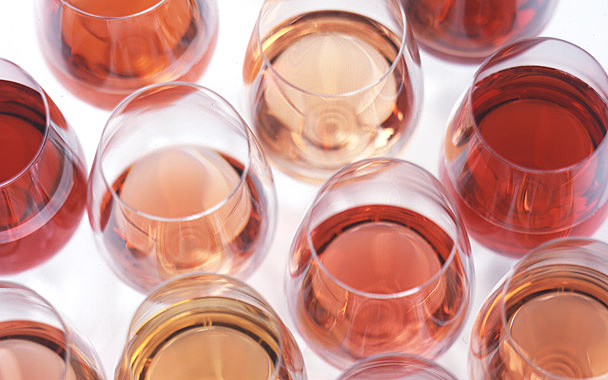
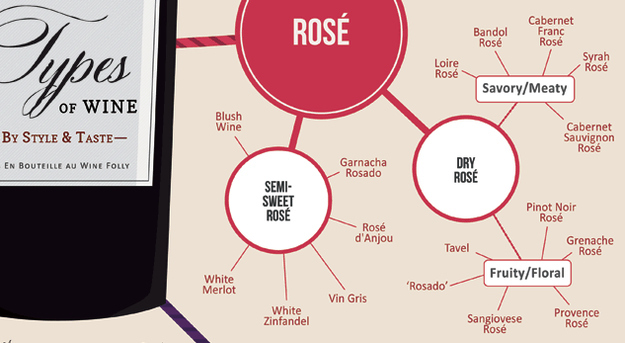
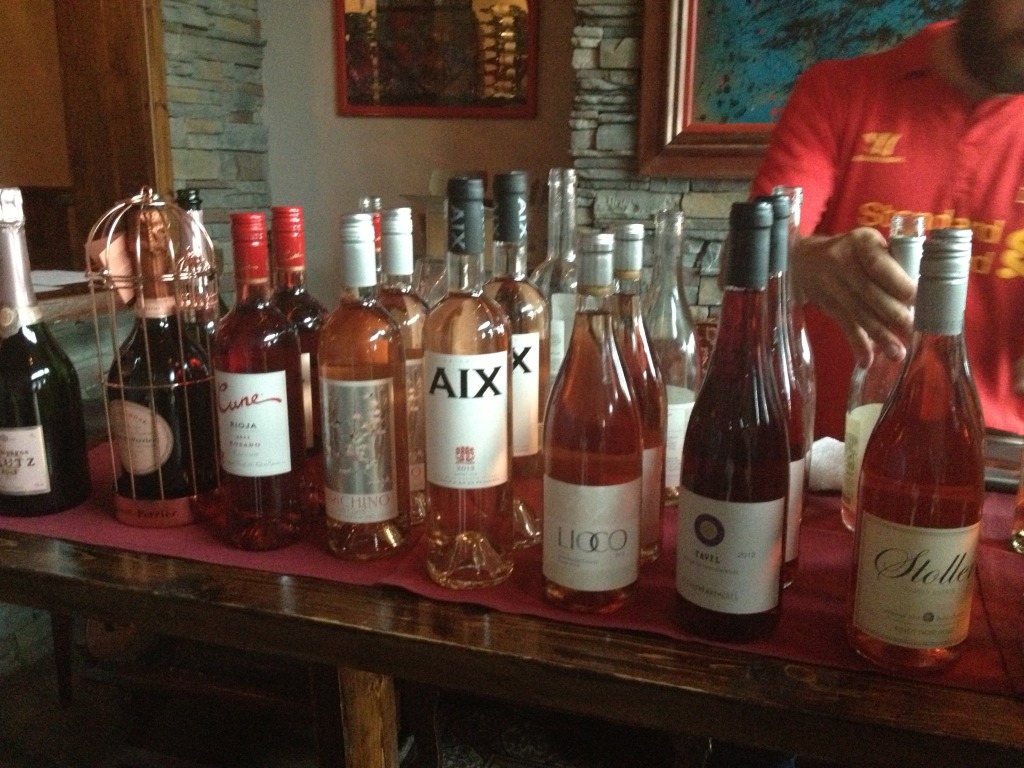
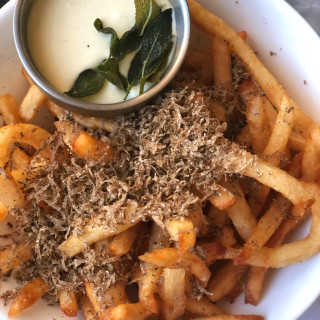
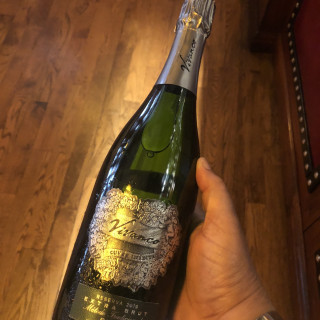
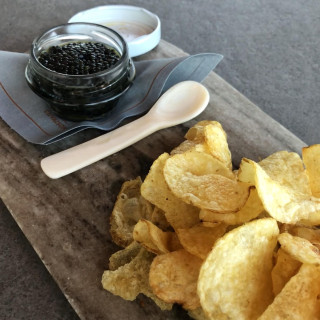
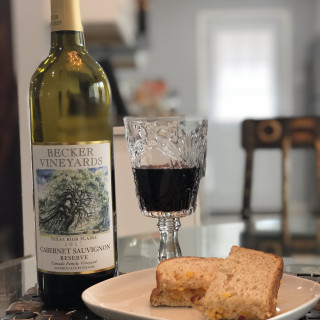
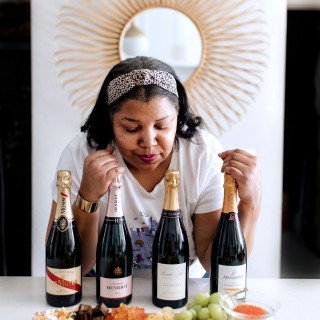
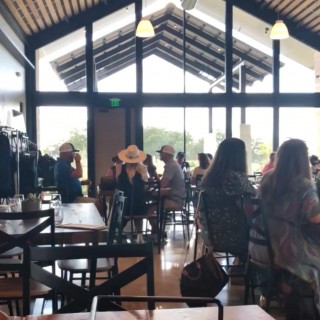
[…] lover, especially when it comes to sparkling rosés. In case you need proof, check out what I think here where I wax poetically about why I’d rather have rosés over roses. For me, bottles […]